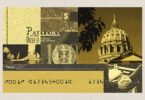By Josh Popichak | Saucon Source
After several stops and starts, Pennsylvania is preparing to roll out its REAL ID program for state-issued driver’s licenses this year, with the first compliant licenses to be issued in March and postcards advertising the new requirements currently being mailed to residents.
But first of all, before you get one, what is REAL ID and why might you need one?
It’s important to note that REAL ID is actually a national set of standards.
It is not a national identification card.
The standards for REAL ID were established by the 2005 REAL ID Act, which was enacted following the 9/11 Commission’s recommendation that the federal government “set standards for the issuance of sources of identification, such as driver’s licenses,” according to the Department of Homeland Security website’s FAQ about REAL ID.
The Act established minimum security standards for state-issued driver’s licenses and ID cards, and prohibits federal agencies from accepting for official purposes licenses and identification cards from states that don’t meet these standards.
That’s why REAL IDs will soon be needed by Pennsylvanians in order to fly.
Beginning Oct. 1, 2020, Pennsylvania residents will need a REAL ID-compliant driver’s license, photo ID card or other form of federally-acceptable identification (such as a valid passport or a military ID) in order to board a domestic commercial flight or enter a federal building or military installation that requires ID.

Credit: PennDOT
If you don’t plan to do anything of these things, there’s no need to make the switch.
However, if you regularly travel by air or expect to do so after Oct. 1, 2020, you may want to get a REAL ID-compliant license sooner rather than later.
The Pennsylvania Department of Transportation has created a checklist of items you will need in order to get a REAL ID-compliant driver’s license, starting in March. You will need to present at least four documents.
PROOF OF IDENTITY
You will need to provide one document proving your identity and your lawful status in the United States when applying for a REAL ID. The most common documents you can use to prove your identity are:
If you are a U.S. citizen, acceptable documents include:
- A United States birth certificate with a raised seal
- A valid U.S. Passport or Passport Card
- Certificate of U.S. Citizenship (USCIS Form N-560) or Consular Report of Birth Abroad (DOS Form FS-240)
- Certificate of Naturalization (USCIS Form N-550 or N-570)
If you are a lawful permanent resident, acceptable documents include:
- I-551 Permanent Resident Card (Green Card)
- Passport with I-551 stamp
- Machine-readable Immigrant Visa
- Re-entry Permit I-327
PROOF OF SOCIAL SECURITY NUMBER
You must present your original Social Security card when applying for a REAL ID.
- Social Security Card
PROOF OF YOUR PENNSYLVANIA RESIDENCY
You will need to provide two documents from among the following to prove your Pennsylvania residency when applying for a REAL ID.
- Current, unexpired PA driver’s license or photo ID card
- PA vehicle registration card
- Auto insurance card
- A computer-generated utility bill showing your name and address (cellphone, cable, electric, gas)
- Postmarked mail/package labels through USPS, UPS, FedEx etc.
- A W-2 form/pay stub
- Lease agreements or mortgage documents
PROOF OF LEGAL NAME, DATE OF BIRTH AND/OR GENDER DESIGNATION CHANGE (if applicable)
If your current legal name, date of birth, or gender designation is different from the information on your birth certificate or legal status document, you must show legal proof of the change. Please note: If you are using a passport as your proof of identity and your passport reflects your current name, YOU DO NOT NEED TO SHOW PROOF OF NAME CHANGE.
For a name or date of birth change, acceptable documents include:
- Certified marriage certificate(s) or divorce decree(s) issued by the county in which you were married
- Court order(s) approving a change of legal name or date of birth
- Original or certified copy of an amended birth certificate showing a change of name
For a gender designation change, acceptable documents include:
- A certified, amended birth certificate with a raised seal
- A completed DL-32 form (PDF)
REAL ID does not create a federal database of driver license information. Each jurisdiction continues to issue its own unique license, maintains its own records, and controls who gets access to those records and under what circumstances.
Lastly, what does a REAL ID cost?
According to PennDOT, applicants will pay a one-time fee of $30, plus a renewal fee (the current renewal fee is $30.50 for a four-year non-commercial driver’s license or a photo ID).
“The expiration date of the initial REAL ID product will include any time remaining on your current license or ID card, plus an additional four years, unless you are over 65 and have a two-year license,” according to the PennDOT website. “This expiration date structure means that you won’t ‘lose’ time that you’ve already paid for. After the initial REAL ID product expires, the customer will pay no additional fee, beyond regular renewal fees, to renew a REAL ID product.”
Still have questions about REAL ID and its rollout in Pennsylvania? Visit PennDOT’s REAL ID website and check out the answers to their FAQ.








